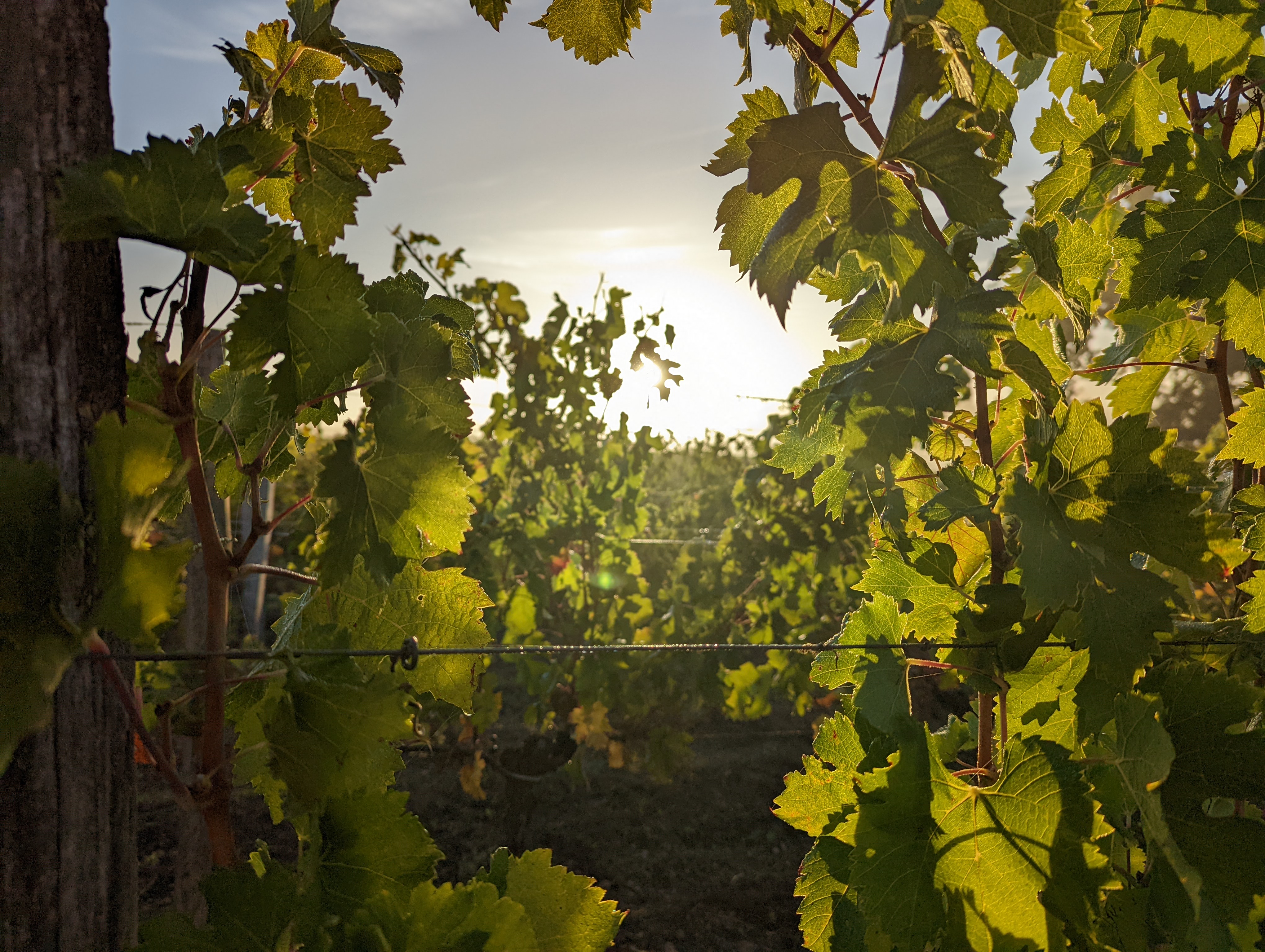The vine cycle: pruning
As you no doubt know, there are two stages in making wine: work in the vineyard (viticulture) and work in the cellar (vinification). Today we're interested in the work carried out in the vineyard, and more specifically in the work we've been doing over the last few weeks: pruning the vines.
Pruning is an essential part of the vine cycle in several respects, for the survival of the vine and for determining wine production yields. Since vines grow in a disorderly fashion, pruning is essential to structure the stock, control its growth and ensure the production of quality fruit. Pruning involves cutting the vine shoots to encourage the development of buds and bunches of grapes. It is one of the winegrower's key tasks throughout the year, since it determines production yields and ultimately the success of a vintage.
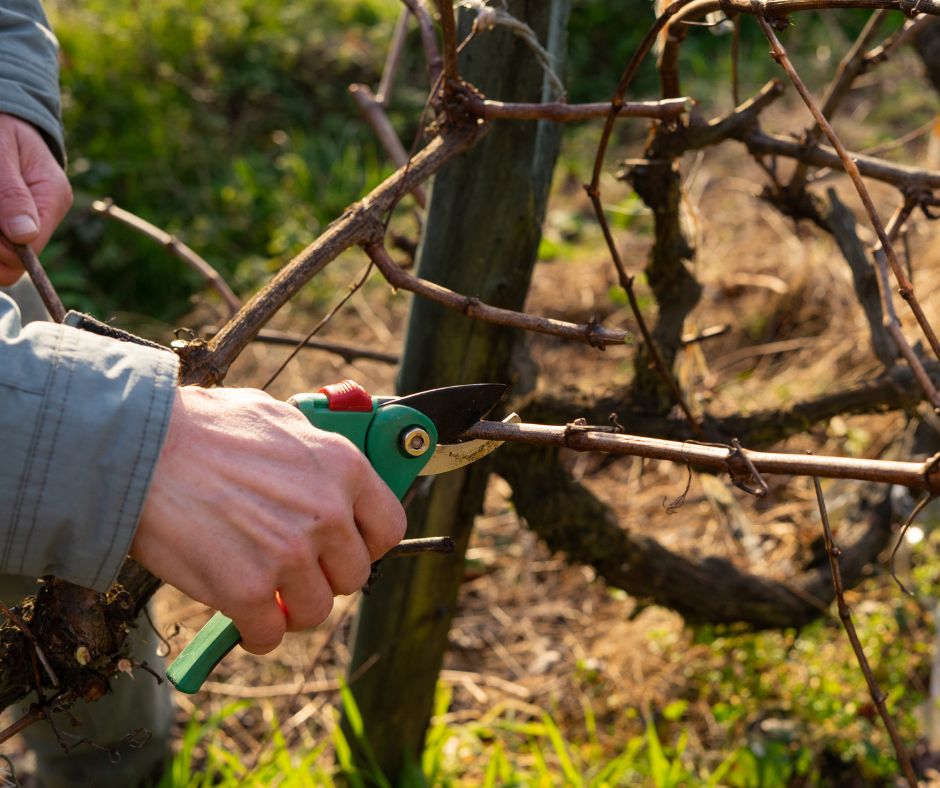
Different types of pruning and objectives
Pruning is crucial throughout the life of the vine, but the objectives differ depending on whether the vine is young or old. Pruning must respect the plant's physiology and not be too aggressive.
Training pruning for young vines
Training pruning is aimed at structuring the vine when it is first planted. It concerns the first three years of the vine's life, and its objectives are not the same as those of pruning a vine in full production. By encouraging good vine formation, pruning helps to limit premature ageing, protect the vine against the development of wood diseases and thus extend the life of the vines. At the very beginning of the vine's life, pruning encourages the development of sap flows, thus stimulating its growth, and enables it to retain as much of this sap as possible in subsequent years. Pruning consists of keeping only the first 2 buds to produce young plants with vigorous shoots and avoid the development of non-productive branches. That's why successful pruning of a young vine is one of the key factors in achieving a healthy, uniform vineyard.
Pruning for maintenance and fruiting
It is carried out every year after training pruning. It plays a central role in controlling the growth of the vine and regulating its production. The branches are pruned to prevent the vine from overgrowing, thereby influencing its shape and spread. Without pruning, the vine would tend to produce more foliage to the detriment of berry development. Maintenance pruning also stimulates flowering to encourage fruiting. The aim is to remove weak, sterile branches so that all the vine's energy is concentrated on the main, fruit-bearing shoots.
It also aims to improve grape quality and productivity. How does it do this? By helping the plant to concentrate its resources on berry production. In order to do so, it is necessary to reduce the number of bunches on each vine. The berries will then benefit from a better concentration of sugars, aromas and essential nutrients. Their ripening will also be optimised and evened out thanks to better exposure of the bunches to the sun, encouraged by the removal of excessive foliage. By regulating the number of bunches per vine, the plant is protected from overproduction, which would exhaust it over time, and long-term productivity is ensured.
Finally, by aerating the vine and reducing its density (foliage and bunches), pruning reduces the humidity in the rows, thereby considerably reducing the risk of disease and the appearance of parasites. Pruning is considered to be one of the main ways of preventing vine diseases.
Rejuvenation and renewal pruning
Given that a vine can reach a hundred years of age, rejuvenation pruning is carried out when the vine becomes too old and its production diminishes. This specific pruning is designed to restore vigour to an ageing vine by stimulating the growth of new fruit-bearing shoots. This way, it helps to regenerate the plant. It involves cutting off the upper parts of the vine. By eliminating dead or diseased branches and limiting the number of shoots, the reinvigorated vine will produce more and better quality grapes.
Each of these three types of pruning responds to a specific need and objective. Training pruning builds the structure of the plant, fruiting pruning regulates the production of bunches, while rejuvenation pruning maintains vitality and guarantees long-term production.
Timing: key moments
Vine pruning is carried out at key times in the vine's growth and also throughout the year. It is generally carried out between November and March when the vine is dormant, i.e. at rest, until budburst. The sap is then descending. Pruning is ideal when the buds are well formed but not yet open. This can vary according to climate and grape variety. The aim is to have completed this operation before the vine wakes up in the spring.
At the end of this vegetative rest, sap flows called "bleeding" appear through the pruning wounds, heralding the return to activity of the root system.
Winter and early spring are not the only times to prune vines. Vines can be pruned during the summer to remove weak, poorly placed, bulky or non-fruit-bearing shoots and thus improve the quality of the grapes: this is known as optimisation pruning. Pruning therefore requires the winegrower's attention all year round.
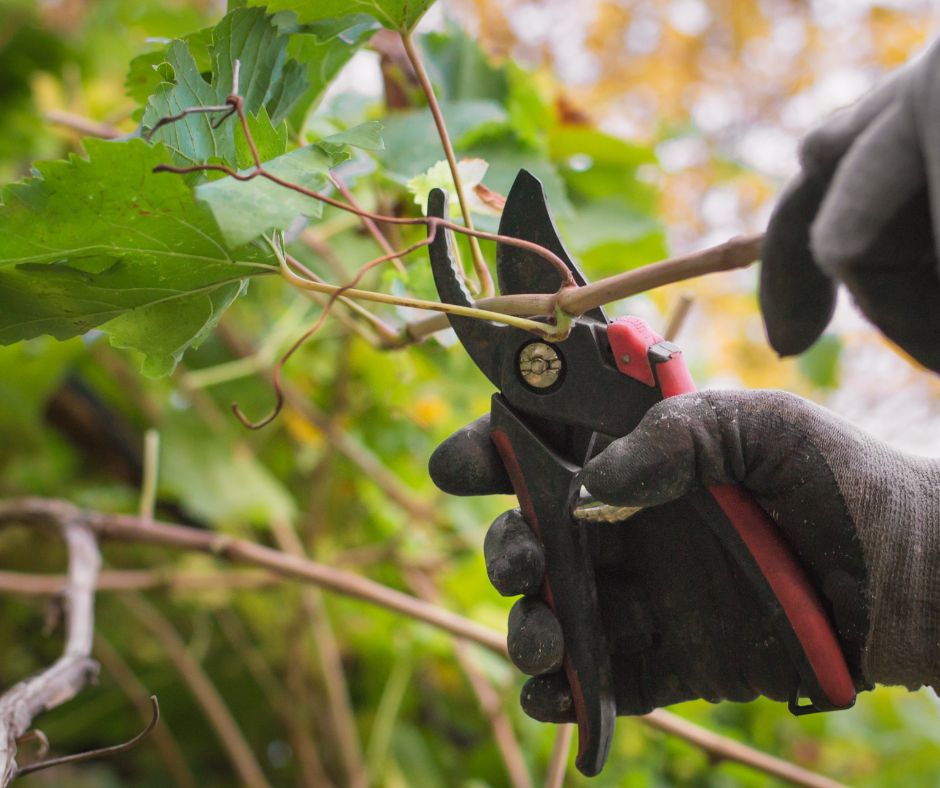
Pruning tools and methods
Tools
You have to learn how to prune vines, and you can't improvise. Any good pruner will be equipped with a variety of specific tools:
- A Bypass pruners : the basic tool for pruning vines. They are commonly used to cut small and medium-sized branches.
- A saw: it is used to cut larger branches.
- Protective gloves are essential to protect hands from thorns and cuts.
- Loppers: used to cut branches that are too high up.
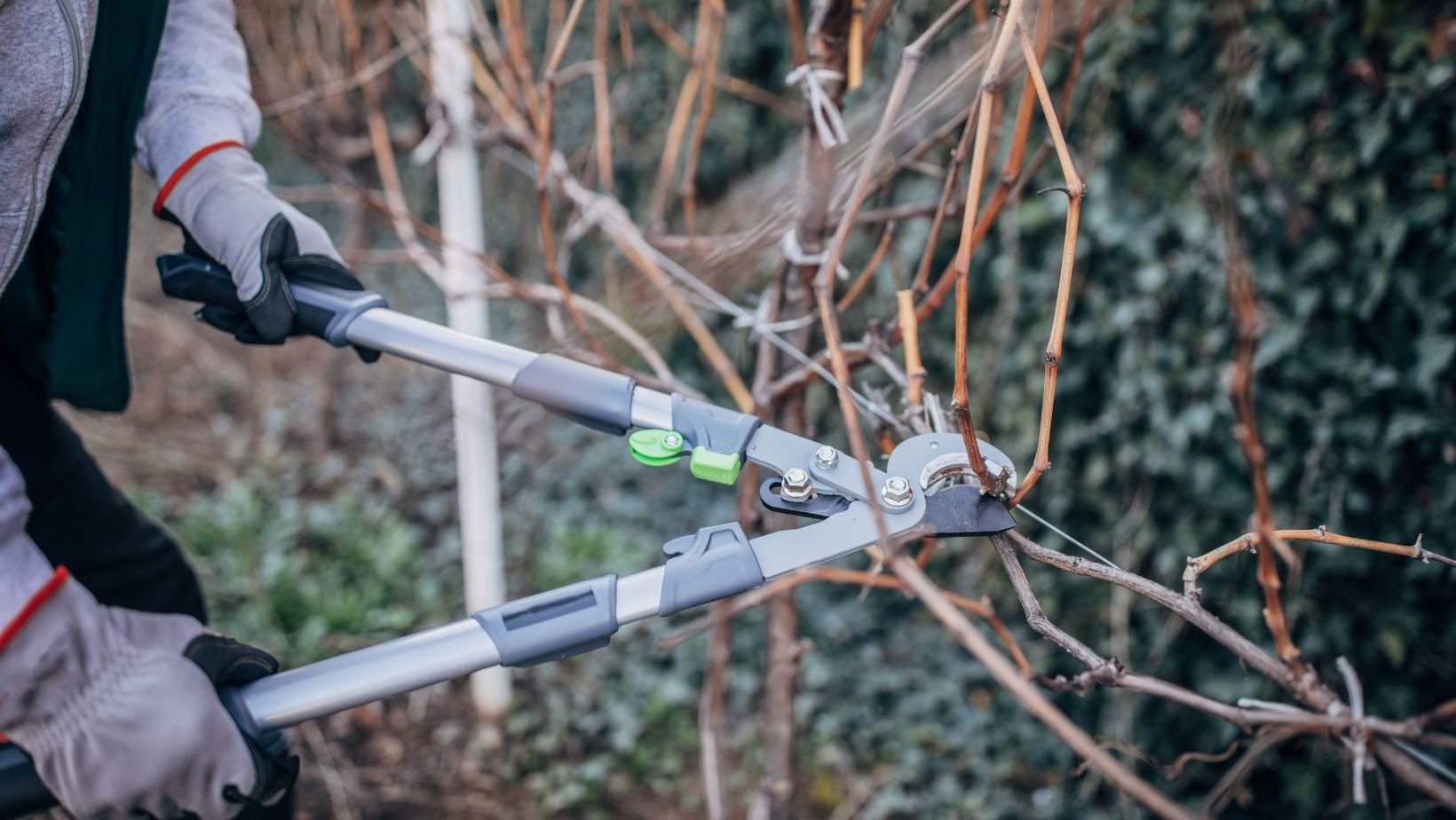
Methods
There are many different styles of pruning in France and around the world, depending on how the vines are trained and the region in which they are grown. There are two types of pruning: short pruning, which retains just one or two eyes per shoot, and long pruning, which retains four to ten eyes per shoot. The most common types of pruning are :
- Long Guyot pruning
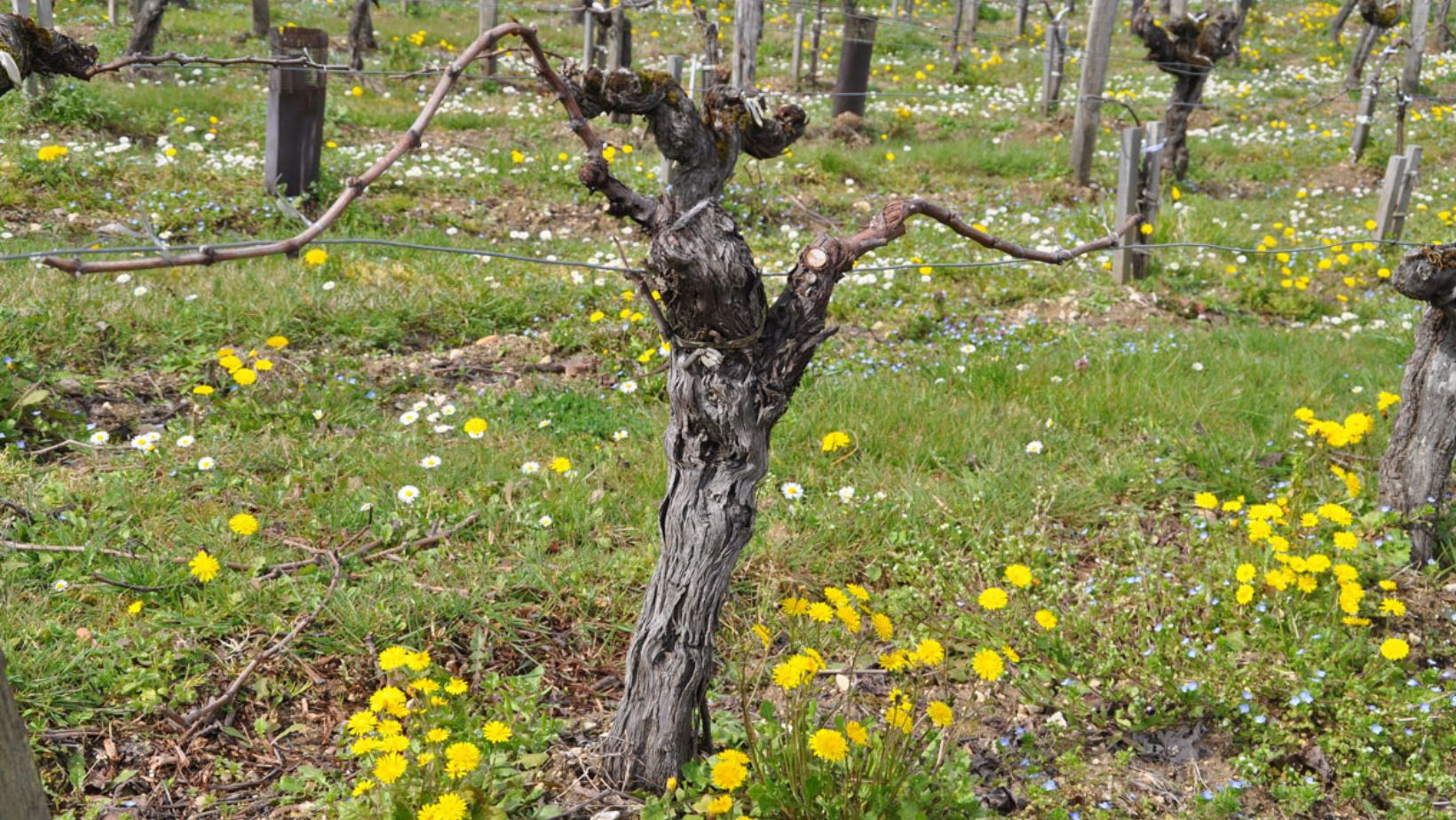
Guyot pruning takes its name from its inventor, Jules Guyot, from the 19th century. It is used on trellised vines. It is a quick and easy pruning technique. There are two variants: the simple Guyot, which consists of leaving one fruit-bearing vine shoot with a variable number of five to seven buds (depending on the vigour of the vine and the desired yield) and the double Guyot, which preserves two shoots so as to obtain two "baguettes". The latter embodies the typical Bordeaux pruning method. This is also the type of pruning chosen by Château La Rose Perrière.
- Goblet (short) pruning.
This is a short pruning method used in some vineyards. Only 3 to 5 branches are left on the vine. This ancient pruning method protects the berries from sunburn thanks to the drooping vegetation and shelters the vines from the wind by positioning the stock close to the ground. This is why it is practised mainly in Mediterranean regions and in the Beaujolais. There are several types of goblet pruning, depending on the region. This method of pruning was widespread before the mechanisation of vineyard work.
- Cordon Royat trellis pruning
This type of pruning is now practised all over the world because it improves the quality of the grapes. It is carried out on trellised vines. The principle is not to keep a large fruit-bearing cane, but rather 4 to 6 small spurs on the vine, each bearing 2 to 3 buds. Royat cordon pruning was invented in Ariège, in the Pyrenees. It is the preferred pruning method in the South of France.
The influence of climate
In regions with a particularly cold climate, it is advisable to wait until the end of winter before pruning. Pruning prematurely in these climatic conditions would weaken the vines, which would then be vulnerable to intense frosts and suffer damage that would jeopardise the year's harvest. On the other hand, in regions with a warmer climate, pruning earlier in the winter may be considered. This is left to the discretion of the winegrower.
To conclude
Pruning vines is an essential part of quality wine production. It must be carried out with care, respecting the physiology of the plant so as not to weaken it. Regular pruning, usually in winter when the vines are at rest, enables the winegrower to optimise grape production, improve quality and maintain good health by protecting the vines from disease and parasites. It's a time-consuming process that requires a great deal of forethought and a professional, or at least experienced, workforce to shape the vines for the years ahead. In addition to the advantages in terms of quality and productivity mentioned above, vine pruning, when properly carried out and structured, simplifies maintenance and harvesting. The selection of bunches and the time and effort required for harvesting are optimised. It remains an essential stage in the management of a vineyard.
